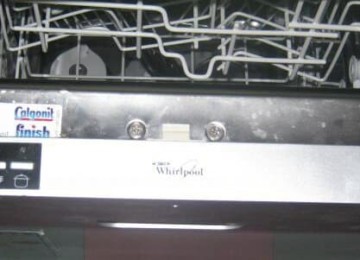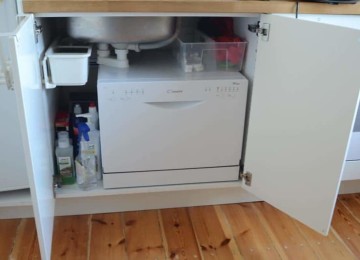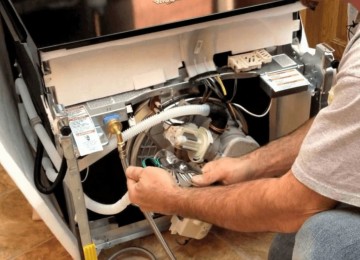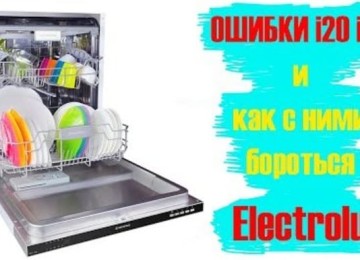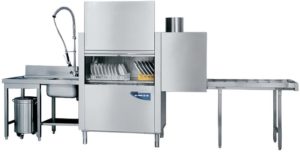 The food industry has long used professional dishwashing machines that resemble a conveyor belt. For this business, several types of units have been developed that fully satisfy the needs of any establishment. One of them is a conveyor dishwasher. It is often compared to the tunnel model, but there are certain differences in the design and operation of this device.
The food industry has long used professional dishwashing machines that resemble a conveyor belt. For this business, several types of units have been developed that fully satisfy the needs of any establishment. One of them is a conveyor dishwasher. It is often compared to the tunnel model, but there are certain differences in the design and operation of this device.
Features of conveyor-type dishwashers
The main difference is that washing dishes resembles the operation of a continuous conveyor. It turns out that in a short time more items are washed in the cassettes. The peculiarity is that the dishes are not placed on a conveyor belt moving through the washing compartment, rinsing and drying compartments (if available).
At the first stage, the main task is to maximum removal of contaminants, for which water heated to fifty to sixty degrees is used. It is supplied from nozzles under strong pressure. For the latest modifications of dishwashers operating on the conveyor principle, such nozzles are located in the direction of movement of the cassettes with dishes, thereby increasing the time of their contact with the liquid. At the time of rinsing, cutlery and plates are doused with water whose temperature is eighty degrees or higher.This measure helps destroy up to ninety percent of harmful microorganisms.
Industrial dishwashers operating on the conveyor principle, in some cases have an additional section for pre-rinsing. Modern models are equipped with steam-condenser units that can capture water vapor generated during washing.
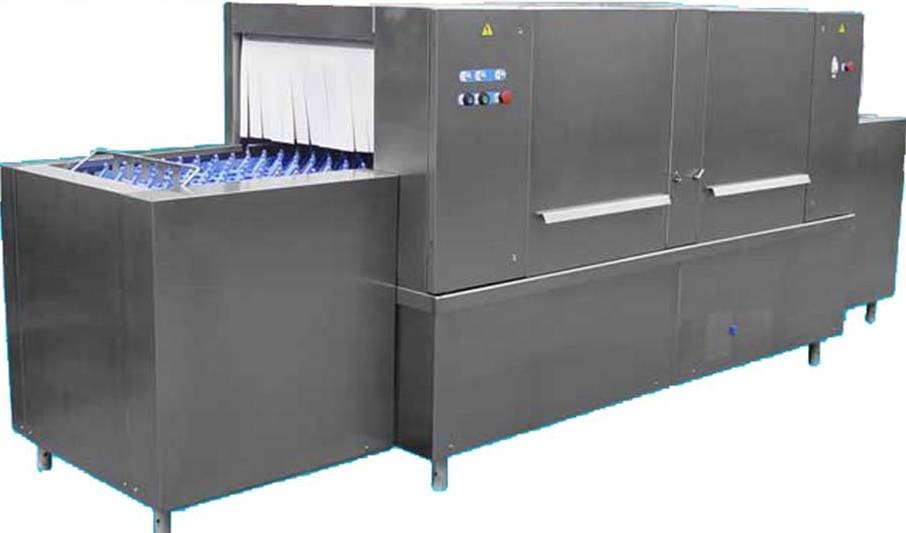
Types of dishwashers, their advantages and disadvantages
Based on their design characteristics, dishwashers are divided into two groups:
- conveyor belt;
- cassette conveyor.
In the first case the plates are placed directly onto a conveyor belt that has special “fingers”. Two people work on this type of machine - one puts the plates in, the second takes them out in their pure form.
For the second type of machines Dishes that require washing are first placed in cassettes, after which they are sent to the washing compartment. Each group of machines has special trays for washing cutlery and other small items.
Belt-type dishwashing equipment is used in canteens of educational institutions, holiday camps and sanatoriums, where a large number of dishes of the same size and shape are provided. This type of machine takes up a lot of free space.
Dishwashing conveyors using cassettes are compact and can be operated by one employee, which creates additional convenience. True, there is one obvious negative point - the cassettes become an obstacle to the penetration of the detergent composition and liquid, and the intensity of the process decreases. Another disadvantage is that cassettes are a consumable item, wear out and require replacement.
Review of popular models
- dishwasher Silanos T 1500 DE
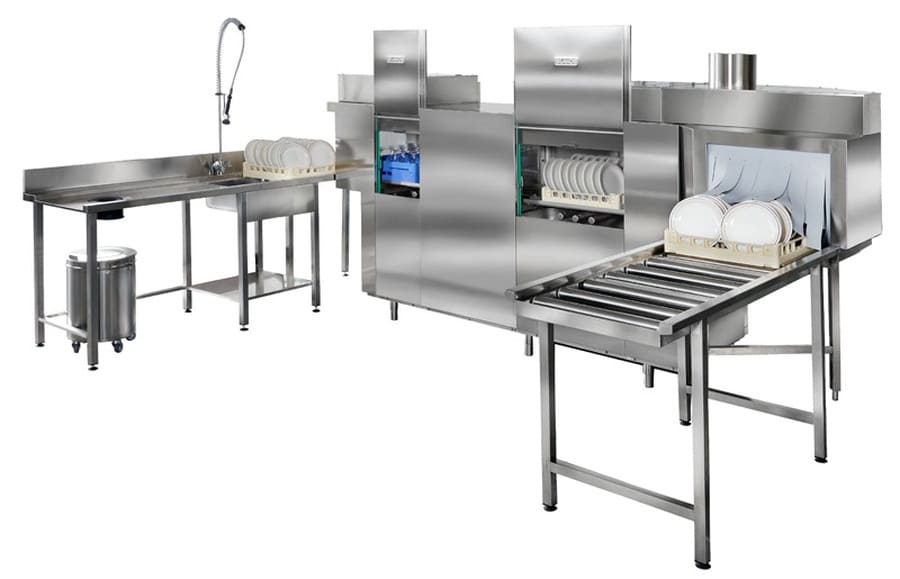 – There are cassettes for washing. The productivity of the unit in one hour is up to 83 cassettes, which is approximately about one and a half thousand items. The set includes cassettes for plates (18 pieces each), cassettes for glasses, a cassette for cutlery. The size of each tray is 0.5 by 0.5 m. The equipment is made of steel material and equipped with electromechanical control. Consumes up to 15.25 kW;
– There are cassettes for washing. The productivity of the unit in one hour is up to 83 cassettes, which is approximately about one and a half thousand items. The set includes cassettes for plates (18 pieces each), cassettes for glasses, a cassette for cutlery. The size of each tray is 0.5 by 0.5 m. The equipment is made of steel material and equipped with electromechanical control. Consumes up to 15.25 kW; - conveyor Elettrobar NIAGARA 2150 DAWY
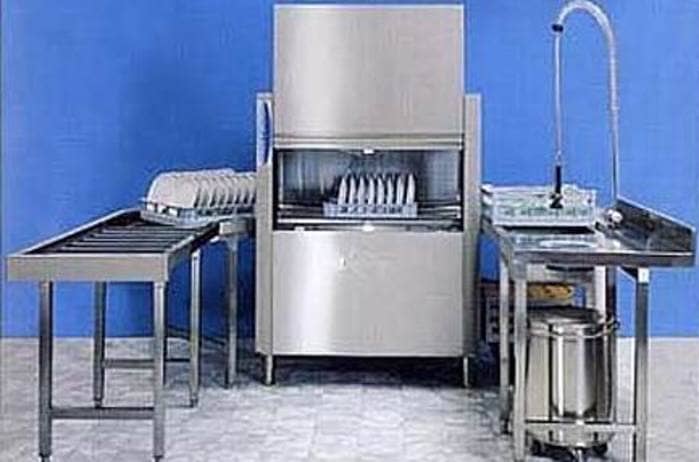 – equipment from an Italian manufacturer, cassettes are fed from the left edge. It has two washing cycles, rinsing and drying. Operates from a 400V network, consumes about 28.8 kW. The average volume of water consumed per working hour is up to two hundred liters;
– equipment from an Italian manufacturer, cassettes are fed from the left edge. It has two washing cycles, rinsing and drying. Operates from a 400V network, consumes about 28.8 kW. The average volume of water consumed per working hour is up to two hundred liters; - conveyor Grodnotorgmash MMU 1000M
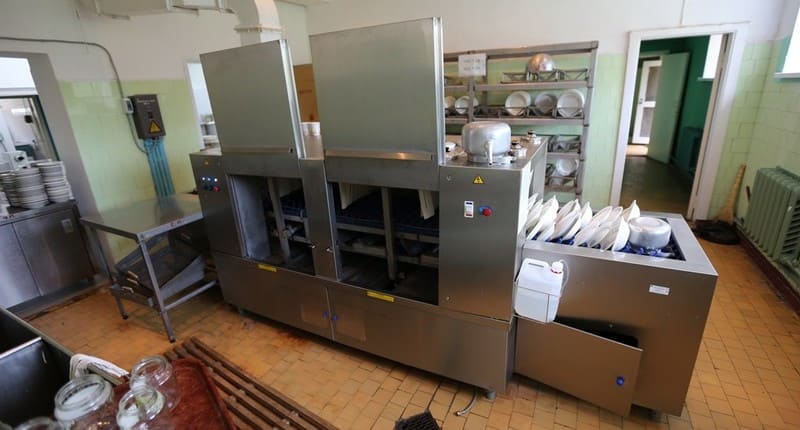 – option connected to the supply of cold and hot water. Structurally, the machine is divided into 3 compartments - for removing large food residues, washing using a special product and double rinsing with hot water. This dishwasher is easy to disassemble, convenient to repair, and has the possibility of wall installation;
– option connected to the supply of cold and hot water. Structurally, the machine is divided into 3 compartments - for removing large food residues, washing using a special product and double rinsing with hot water. This dishwasher is easy to disassemble, convenient to repair, and has the possibility of wall installation; - conveyor ELECTROLUX WTM 250 ELA 534113
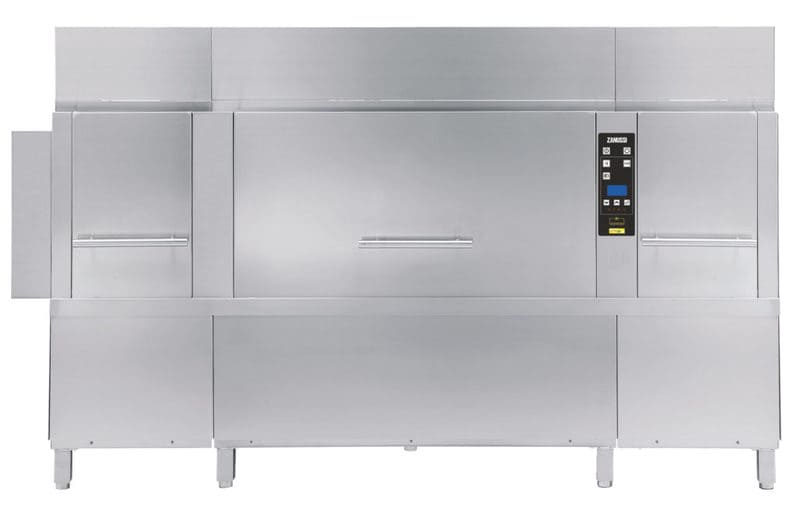 – a machine that uses cassettes.The Electrolux dishwasher has two washing and rinsing cycles. About 4,500 plates are washed within an hour. An electrical network of 380 V is required for connection. With a consumption of 44.2 kW, the dishwasher consumes up to three hundred liters of water. Refers to non-economical technology;
– a machine that uses cassettes.The Electrolux dishwasher has two washing and rinsing cycles. About 4,500 plates are washed within an hour. An electrical network of 380 V is required for connection. With a consumption of 44.2 kW, the dishwasher consumes up to three hundred liters of water. Refers to non-economical technology; - conveyor Mach MST/021
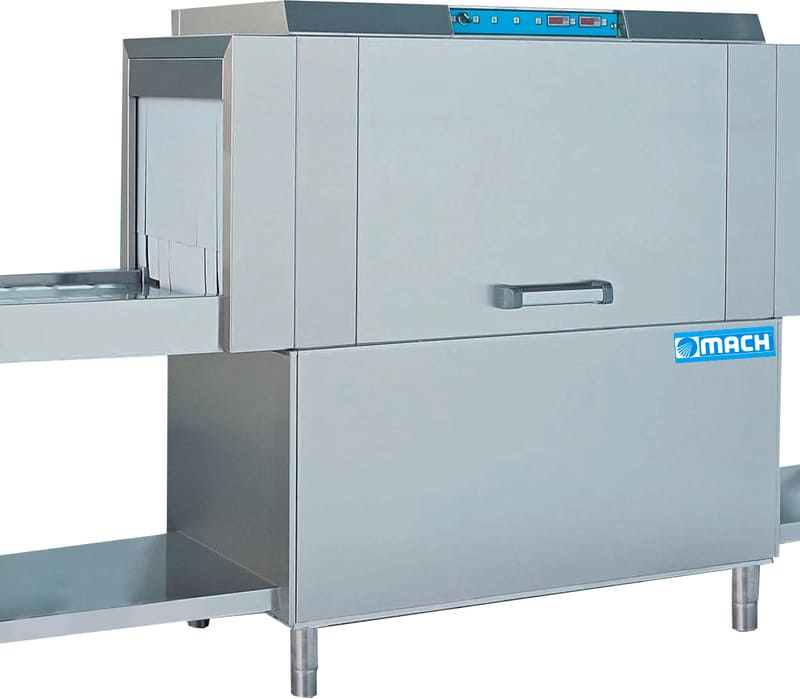 – another model of Italian origin, for the production of which stainless metal was used. The plates are placed in cassettes, the number of which reaches ninety-five pieces per working hour. Unit power – 29 kW. The device can turn off automatically and is equipped with a pump and a guillotine-type door;
– another model of Italian origin, for the production of which stainless metal was used. The plates are placed in cassettes, the number of which reaches ninety-five pieces per working hour. Unit power – 29 kW. The device can turn off automatically and is equipped with a pump and a guillotine-type door; - machine Mach MST 025
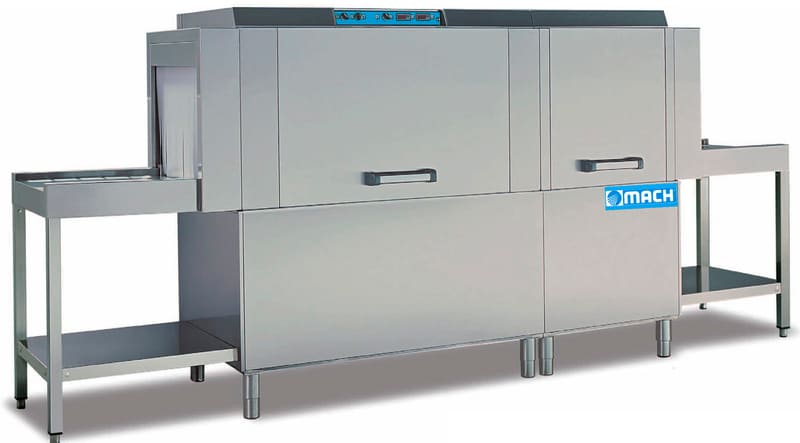 The unit effectively washes not only plates, but also cutlery. The high-performance device is easy to control from the panel - the water level controller in the tank and the liquid temperature sensor are located nearby. The unit is started from a button, shutdown is performed automatically, for which a special timer is responsible. The kit includes a cassette 0.5 by 0.44 m. The weight of the dishwasher is 335 kg; a three-phase network is required for connection. During one working hour, the machine is capable of washing from 69 to 108 cassettes with dishes. The water tank is designed for seventy liters, for heating there is a 24 liter boiler. The process of washing dishes occurs when the water is heated to 55 degrees;
The unit effectively washes not only plates, but also cutlery. The high-performance device is easy to control from the panel - the water level controller in the tank and the liquid temperature sensor are located nearby. The unit is started from a button, shutdown is performed automatically, for which a special timer is responsible. The kit includes a cassette 0.5 by 0.44 m. The weight of the dishwasher is 335 kg; a three-phase network is required for connection. During one working hour, the machine is capable of washing from 69 to 108 cassettes with dishes. The water tank is designed for seventy liters, for heating there is a 24 liter boiler. The process of washing dishes occurs when the water is heated to 55 degrees; - MACH MST-015 –
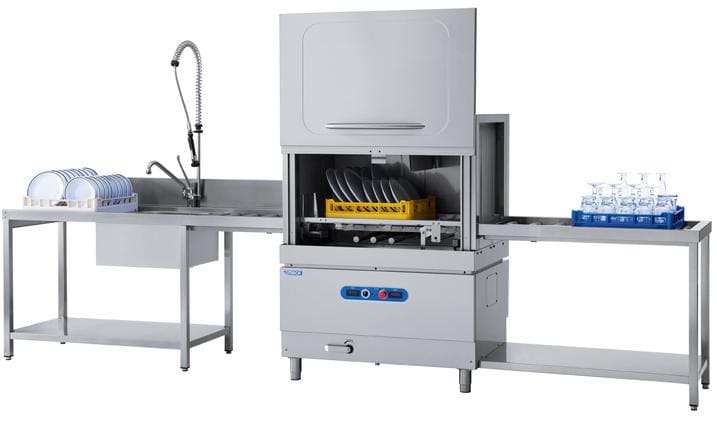 According to its characteristics, the machine resembles the previous device. Its productivity is one and a half thousand plates within one working hour.Distinctive features include an easy-to-use control panel, rounded corners of the unit, a set of four cassettes, a door microswitch, a drain pump, and ease of disassembly.
According to its characteristics, the machine resembles the previous device. Its productivity is one and a half thousand plates within one working hour.Distinctive features include an easy-to-use control panel, rounded corners of the unit, a set of four cassettes, a door microswitch, a drain pump, and ease of disassembly.
Conclusion
The information presented here does not at all mean that conveyor-type dishwashing units will be able to meet the needs of your enterprise, but it is recommended to study their characteristics if you are satisfied with the advantages of the models. Dish washing machines, operating like a conveyor belt, are considered indispensable units in large public catering facilities.






